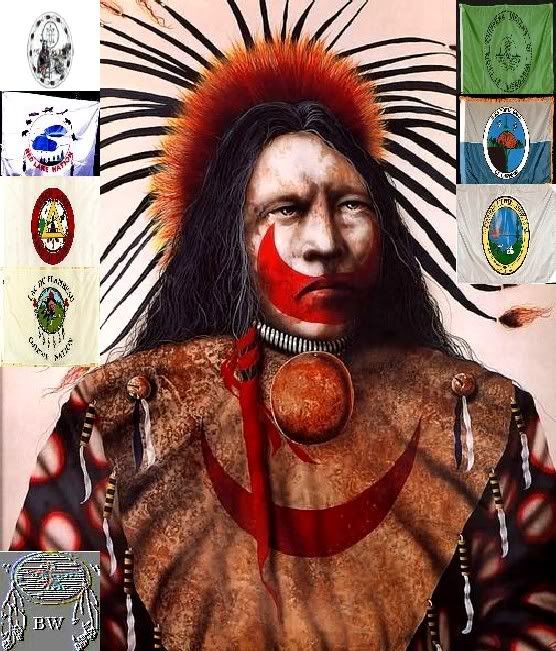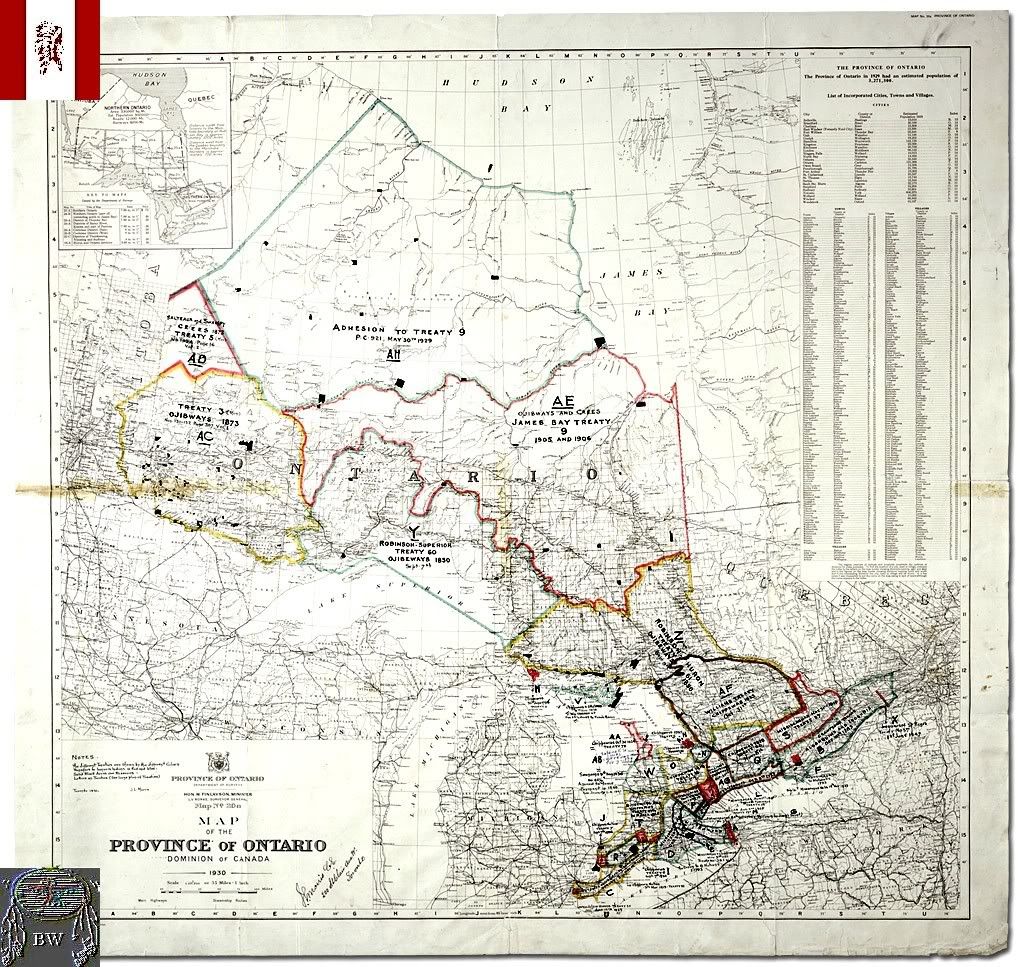|
BRAVEHORSE WARRIOR Shahwundais
Missisauga Warrior

 Chief Shahwundais
Warrior Citation
SHAH-WUN-DAIS (“sultry heat”; better known as John Sunday), Methodist minister and Missisauga chieftain; b.c.
1795 near the Black River in central New York State; d. 14 Dec. 1875 at Alderville, Ont. John Sunday was a member of the Missisauga
tribe, which was scattered throughout central Upper Canada and particularly in the vicinity of Rice Lake and the mouth of
the Credit River. Possibly Sunday’s family was on an expedition in New York when he was born (the Black River district
is opposite Kingston) or, as the border was still rather fluid in 1795, they may have lived there. Sunday said he fought in
the War of 1812–14; presumably he was recruited by the British forces as a Native American auxiliary. He appears to
have been recognized as a chief, and was one of the signatories of the lease for the Grape Island mission lands in 1826, but
the office of chief was not very important among his people. Urged on by the Reverend William Case, the Canada Conference
of the Methodist Episcopal Church launched a vigorous campaign in 1824 to convert the Upper Canadian Native Americans to Christianity
and to assimilate them to British North American society. John Sunday, who, like the majority of Native Americans, was living
in miserable conditions near the white settlements, was one of the early converts, and was quickly singled out as a potential
religious leader. He was married when, in 1826, he assisted in the establishment of a model mission settlement on Grape Island
in the Bay of Quinte, at which the Native Americans were induced to pursue an ordered religious life, to raise crops, and
to acquire elementary academic and technical skills. Sunday, however, did not remain long on the island; under the direction
of Case and his fellow-chieftain, Peter Jones, he became an itinerant missionary to the Missisaugas and Ojibwas in Upper Canada
and northern Michigan. Sunday had acquired sufficient education and experience at the Grape Island mission by 1832 to be accepted
as a ministerial candidate. He travelled extensively for several years thereafter, particularly among the Ojibwas in the Lake
Superior region. Following his ordination in 1836 he visited Great Britain to stimulate interest in the Native American missions,
and was presented to Queen Victoria. His addresses and his conversations with English Methodists attracted much favourable
attention and helped arouse greater concern in political circles for the welfare of the Indians. Subsequently he served on
several mission stations, including Alderville, where he lived after being superannuated in 1867.
Chief Shahwundais
Warrior Citation
SHAH-WUN-DAIS (“sultry heat”; better known as John Sunday), Methodist minister and Missisauga chieftain; b.c.
1795 near the Black River in central New York State; d. 14 Dec. 1875 at Alderville, Ont. John Sunday was a member of the Missisauga
tribe, which was scattered throughout central Upper Canada and particularly in the vicinity of Rice Lake and the mouth of
the Credit River. Possibly Sunday’s family was on an expedition in New York when he was born (the Black River district
is opposite Kingston) or, as the border was still rather fluid in 1795, they may have lived there. Sunday said he fought in
the War of 1812–14; presumably he was recruited by the British forces as a Native American auxiliary. He appears to
have been recognized as a chief, and was one of the signatories of the lease for the Grape Island mission lands in 1826, but
the office of chief was not very important among his people. Urged on by the Reverend William Case, the Canada Conference
of the Methodist Episcopal Church launched a vigorous campaign in 1824 to convert the Upper Canadian Native Americans to Christianity
and to assimilate them to British North American society. John Sunday, who, like the majority of Native Americans, was living
in miserable conditions near the white settlements, was one of the early converts, and was quickly singled out as a potential
religious leader. He was married when, in 1826, he assisted in the establishment of a model mission settlement on Grape Island
in the Bay of Quinte, at which the Native Americans were induced to pursue an ordered religious life, to raise crops, and
to acquire elementary academic and technical skills. Sunday, however, did not remain long on the island; under the direction
of Case and his fellow-chieftain, Peter Jones, he became an itinerant missionary to the Missisaugas and Ojibwas in Upper Canada
and northern Michigan. Sunday had acquired sufficient education and experience at the Grape Island mission by 1832 to be accepted
as a ministerial candidate. He travelled extensively for several years thereafter, particularly among the Ojibwas in the Lake
Superior region. Following his ordination in 1836 he visited Great Britain to stimulate interest in the Native American missions,
and was presented to Queen Victoria. His addresses and his conversations with English Methodists attracted much favourable
attention and helped arouse greater concern in political circles for the welfare of the Indians. Subsequently he served on
several mission stations, including Alderville, where he lived after being superannuated in 1867.
 Among his Methodist brethren Sunday had an outstanding reputation as a person and as a preacher. In his own tongue,
he was “always effective, often eloquent”; on occasion he “rose to the grandeur of sublimity in thought
and speech.” Although he was never fluent in English, “the quaint originality of his remarks” was said to
have been “irresistibly attractive.” As a pastor he labored faithfully for his people; when blind and near death
he was still speaking to them at length, showing them “how wonderfully he had been led into the way of the Kingdom.”
John Sunday’s career epitomized the initial impact of Methodist missions on the scattered Indian tribes of Upper Canada.
For him, as for many of his fellows, Christianity gave a new meaning to life and a measure of dignity and of material comfort,
but it did not bring them fully into the white community or enable them effectively to adapt their own culture to new and
changing social conditions. From: historical accounts & records
Among his Methodist brethren Sunday had an outstanding reputation as a person and as a preacher. In his own tongue,
he was “always effective, often eloquent”; on occasion he “rose to the grandeur of sublimity in thought
and speech.” Although he was never fluent in English, “the quaint originality of his remarks” was said to
have been “irresistibly attractive.” As a pastor he labored faithfully for his people; when blind and near death
he was still speaking to them at length, showing them “how wonderfully he had been led into the way of the Kingdom.”
John Sunday’s career epitomized the initial impact of Methodist missions on the scattered Indian tribes of Upper Canada.
For him, as for many of his fellows, Christianity gave a new meaning to life and a measure of dignity and of material comfort,
but it did not bring them fully into the white community or enable them effectively to adapt their own culture to new and
changing social conditions. From: historical accounts & records
|

